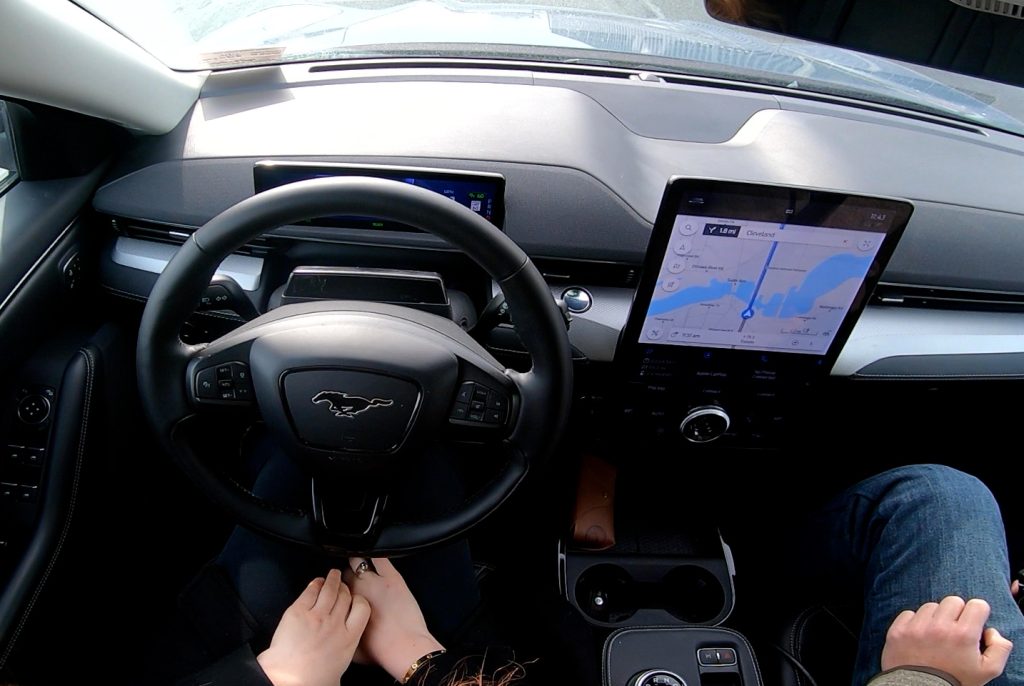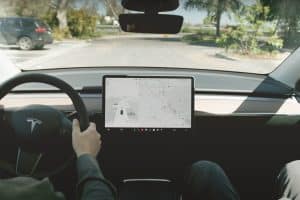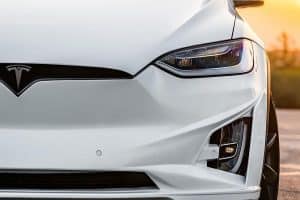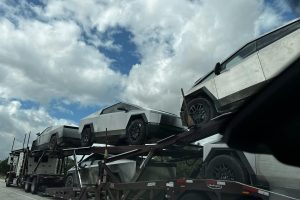Ford’s BlueCruise and General Motors’ SuperCruise were ranked in the top two spots in Consumer Reports’ recent analysis of twelve Active Driving Assistance Systems, while Tesla Autopilot was ranked seventh.
Among the manufacturers involved in the study, Ford and GM performed better than Mercedes-Benz, BMW, Toyota/Lexus, Volkswagen/Audi, Tesla, Rivian, Nissan/Infinity, Honda/Acura, Volvo/Polestar, and Hyundai/Kia/Genesis. Ford and GM’s driver monitoring systems were also lauded during CR’s 2022 testing.
Systems were tested around a track at CR’s Auto Test Center and on a 50-mile loop on public roads from September to December 2022. Each system had forty separate tests, and was evaluated in five specific categories: capability and performance, keeping the driver engaged, ease of use, clear when safe to use, and unresponsive driver.
According to the report directly from CR, Ford and GM’s ADAS options use “direct driver monitoring systems,” or DDMS, that require driver eyes to remain on the road, even while actions like steering, acceleration, and braking are being automated by the vehicles. These systems are crucial in CR’s grading scale, and the firm said it awards extra points to options that hold drivers accountable with DDMS. Additionally, systems that do not have DDMS will have points deducted.

Here are the gradings and ratings:
- Ford BlueCruise/Lincoln ActiveGlide – 84
- Chevrolet/GMC/Cadillac/General Motors Super Cruise – 75
- Mercedes-Benz Driver Assistance – 72
- BMW Driving Assistance Professional – 69
- Toyota Safety Sense 3.0/Lexus Safety System+ 3.0 – 65
- Volkswagen Travel Assist/Audi Adaptive Cruise Assist – 62
- Tesla Autopilot – 61
- Rivian Highway Assist – 59
- Nissan/Infiniti ProPILOT Assist – 58
- Honda Sensing/Acura AcuraWatch – 58
- Volvo/Polestar Pilot Assist – 53
- Hyundai/Kia/Genesis Highway Driving Assist – 47
THE ELEPHANT IN THE ROOM: WHERE TESLA FELL SHORT, ACCORDING TO CR
Tesla was given the following grades in the five categories that were assessed:
- Capabilities and Performance – 9/10
- Keeping Driver Engaged – 3/10
- Ease of Use – 5/10
- Clear When Safe to Use – 3/10
- Unresponsive Driver – 4/10
CR said that Tesla has fallen from its second-place spot in 2020 to mid-pack because the automaker “hasn’t changed Autopilot’s basic functionality much since it first came out, instead just adding more features to it.”
“After all this time, Autopilot still doesn’t allow collaborative steering and doesn’t have an effective driver monitoring system,” Jake Fisher of CR said. “While other automakers have evolved their ACC (adaptive cruise control) and LCA (lane-centering assistance) systems, Tesla has simply fallen behind.”
One portion of the testing where CR was most critical was when Tesla and Mercedes-Benz’s systems allowed the vehicle to drive down the highway completely hands-free for roughly thirty seconds before audible alerts were given. Kelly Funkhouser, CR’s Manager of Vehicle Technology, estimated that it was roughly a half mile on a highway before the vehicles alerted the driver to pay attention to the road.
Tesla does have cabin cameras that monitor driver inattentiveness. The Model Y Owners Manual says the following:
“The cabin camera can determine driver inattentiveness and provide you with audible alerts, to remind you to keep your eyes on the road when Autopilot is engaged. By default, images and video from the camera do not leave the vehicle itself and are not transmitted to anyone, including Tesla, unless you enable data sharing. If you enable data sharing and a safety critical event occurs (such as a collision), Model Y shares short cabin camera video clips with Tesla to help us develop future safety enhancements and continuously improve the intelligence of features that rely on the cabin camera.”
In May 2021, Tesla activated camera-based driver monitoring. “The cabin camera above your rearview mirror can now detect and alert driver inattentiveness while Autopilot is engaged,” Tesla said in the notes. Tests of Tesla’s driver monitoring tests showed the system was effective in some instances, especially when looking at cell phones, with alerts coming in 15 seconds.
Tesla was complemented with its lane centering, as it gave smooth steering inputs and kept the car near the center of the lane on straight and curved roads.
However, more compliments came from CR with Tesla’s Adaptive Cruise Control. “The ACC function of Tesla’s Autopilot system is capable of stopping the car, such as at a red light behind another vehicle, for an unlimited amount of time before resuming again. But without an adequate driver monitoring camera,” Funkhouser said,” this is potentially unsafe as there’s no way to know whether the driver is paying attention when the vehicle starts moving again.”
Tesla’s system apparently differs from GM and Ford’s in the sense that BlueCruise and Super Cruise as “both point infrared cameras at driver faces and sound an alert if the driver stops paying attention to the road, even if just for a few seconds.”
You can read Consumer Reports’ full report here.





